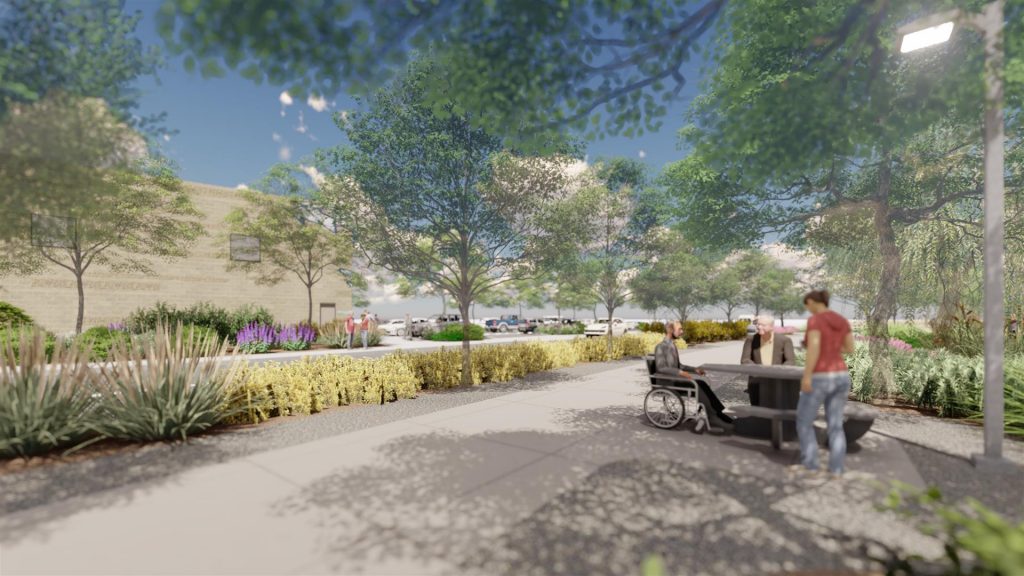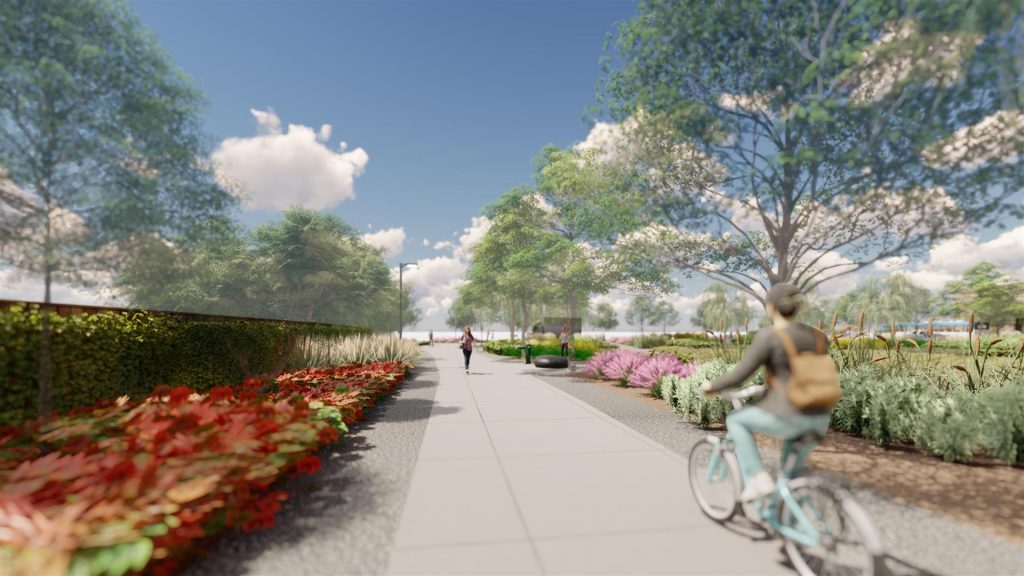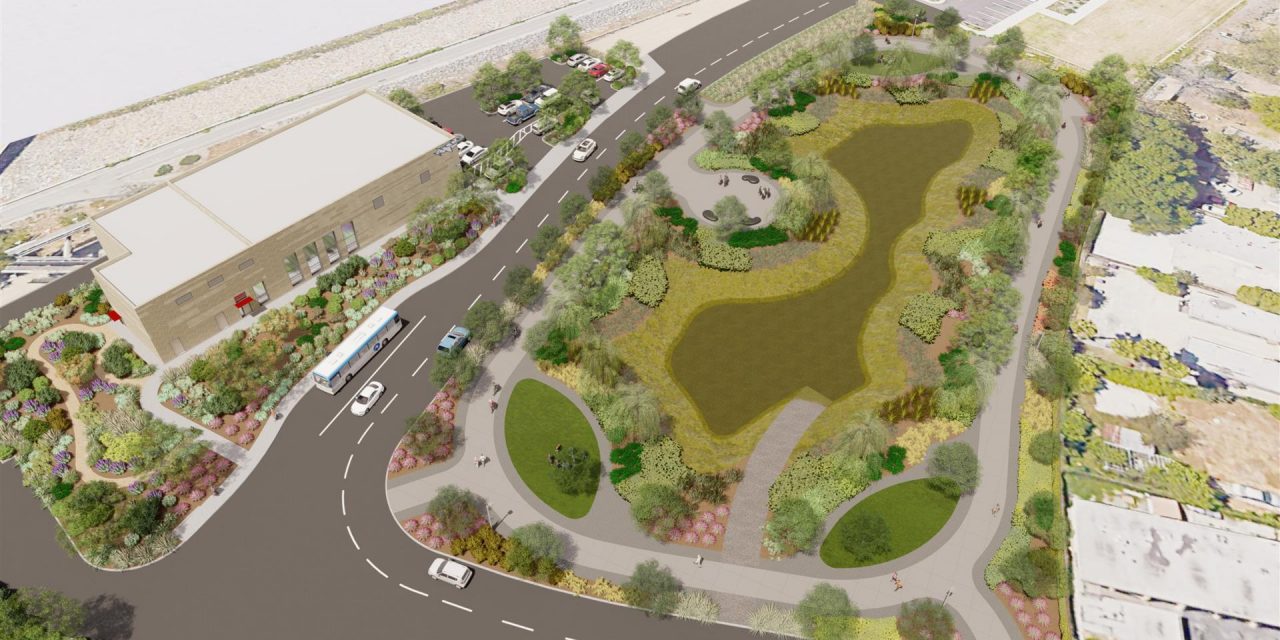Construction is well underway on a project in Long Beach, California, to transform a highly impervious industrial corridor into a stormwater treatment hub, capable of collecting and diverting more than 40% of urban runoff generated throughout the Lower Los Angeles River Watershed. The Long Beach Municipal Urban Stormwater Treatment Project (LB-MUST), expected to become operational in 2024, aims to drastically reduce the flow of untreated stormwater runoff into the Los Angeles River, San Pedro Bay, and Pacific Ocean.
The Long Beach Department of Public Works (DPW) estimates that LB-MUST, which will consist of an advanced stormwater treatment facility as well as an adjacent constructed wetland, will be able to capture and treat nearly 2,000 acre-feet per year of urban runoff when fully built. More than 800 acre-feet per year of this runoff will be suitable for non-potable reuse applications throughout the region.
In April, the LB-MUST project earned an Envision Platinum certification from the Institute of Sustainable Infrastructure (ISI; Washington, D.C.). LB-MUST is the fourth stormwater project in the Los Angeles region and the first in Long Beach to receive the designation. The certification recognizes infrastructure designs that prioritize sustainability and environmental equity.
“Achieving Envision Platinum affirms the City of Long Beach’s commitment to sustainability and sets an example for other public and private developments,” said ISI Managing Director Melissa Peneycad, in a release. “This multi-benefit project is a prime example of an infrastructure project that incorporates nature-based solutions to minimize environmental impact while meeting the long-term needs of the communities it serves.”
Targeting Runoff and Recreation
Strategically located at the mouth of the Los Angeles River, the new LB-MUST treatment facility will divert stormwater from existing pump stations throughout the watershed. Once diverted, runoff will undergo a combination of ceramic ultrafiltration, media filtration, and photocatalytic treatment, purging both organic and inorganic contaminants as small as 0.01 micrometers in diameter. Initial plans for the facility will enable it to accept about 9.1 mL/d (2 mgd) of runoff, with the potential to double its capacity with future upgrades.

According to project documents, the facility primarily aims to capture dry weather runoff — the most prevalent source of water pollution in the region, originating from such activities as watering lawns and washing cars as well as groundwater seepage and illicit discharges. However, the design also targets the “first-flush” portion of runoff generated during storms. Critically, LB-MUST will feature considerable public outreach elements, described Ed Othmer, who managed the design of the treatment facility on behalf of Stantec (San Diego, California). The facility will invite the public for guided tours and will feature educational signage throughout the premises.
“At the outset, I envisioned this project as more than just a stormwater treatment facility,” Othmer said in a release. “I wanted LB-MUST to be the flagship regional project along the LA River that fostered broader community collaboration to inform greater sustainability decisions. I’m thankful to the City of Long Beach for allowing me to manage this amazing project.”
The 0.4-ha (1-acre) constructed wetland, to be partially irrigated with treated runoff, will further the city’s goals to improve access to green space for locals while also passively managing stormwater. Under long-term plans for the project site, the wetland will connect to adjacent outdoor amenities like soccer fields and the Los Angeles River Bike Path. Designed in cooperation with the Aquarium of the Pacific (Long Beach) and the San Gabriel and Lower Los Angeles Rivers and Mountains Conservancy (Azusa, California), the wetland will feature native, drought-resistant vegetation and add new walking paths and rest areas to the site.
Long Beach’s Willmore neighborhood, the site of the LB-MUST project, ranks within the 90th percentile for pollution burden throughout all Los Angeles County neighborhoods, according to a 2016 report on access to green spaces compiled by the county government. This means that its residents face significant exposure to pollutants and the adverse environmental effects caused by pollution, in large part due to its downstream location and scarcity of existing green spaces, the report describes.
Financing Beyond the Fence
The range of funding sources for LB-MUST reflect common buy-in for new sustainability measures by voters, government entities, and local nonprofit groups. Project planners have budgeted $44 million for the first phase of the LB-MUST project, which supports the initial construction of the treatment facility and wetland.

The California Department of Transportation invested $28 million into LB-MUST in exchange for credits that count toward fulfilling requirements of the state agency’s National Pollutant Discharge Elimination System (NPDES) permits. The Port of Long Beach, the second-busiest container seaport in the U.S. and a neighbor to the LB-MUST project, also contributed $1 million.
Approximately $14 million came from local tax programs, including $1 million from Measure A, a sales tax to support infrastructure approved by Long Beach voters in 2016, and $10.8 million from Measure W, a 2018 parcel tax passed by voters in Los Angeles County specifically tailored to funding water infrastructure. The California Coastal Conservancy contributed $500,000. Thanks to innovative funding strategies that engaged multiple partners throughout the region, the first phase of LB-MUST required only a $428,000 investment from the Long Beach municipal government.
“The regional cooperation deployed and implemented to achieve the project’s goals is outstanding and serves as inspiration for other regions,” Peneycad said.
Top image courtesy of Stantec/City of Long Beach

ABOUT THE AUTHOR
Justin Jacques is editor of Stormwater Report and a staff member of the Water Environment Federation (WEF). In addition to writing for WEF’s online publications, he also contributes to Water Environment & Technology magazine. Contact him at jjacques@wef.org.




